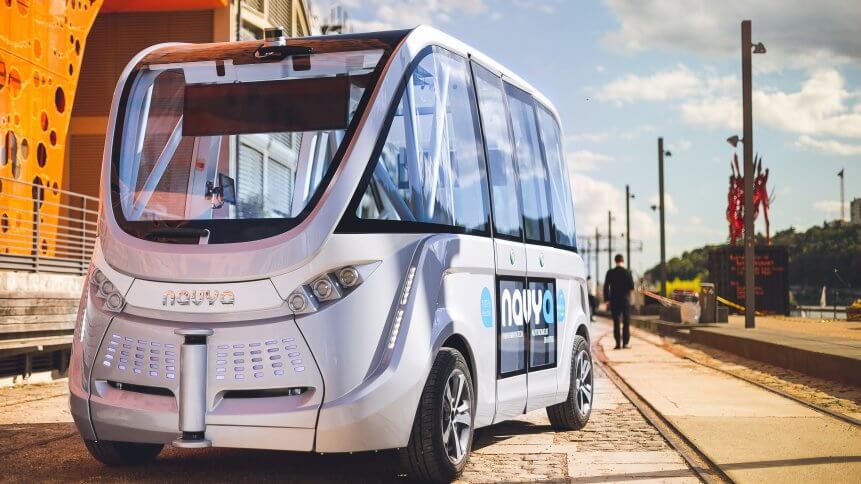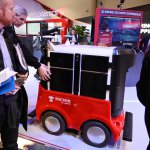Autonomous vehicles are couriering Covid-19 tests in the States

While progress in the future mobility market has certainly hit a speed bump amid widespread supply chain disruption and workshop closures, the COVID-19 pandemic is still sparking innovation in the sector, as we see demonstrations of how autonomous vehicles can help in the unique circumstances.
In what the medical nonprofit termed a ‘first’ for the US, French company NAVYA has been developing shuttle-bus-style vehicles with its partner Beep to transport COVID-19 testing kits and other supplies between drive-through testing sites and nearby laboratories.
NAVYA has conducted pilot programs since 2017 in Las Vegas and Michigan but has deployed its shuttle vehicles to help the Mayo Clinic in Florida to deliver urgent supplies and medical samples while minimizing potential person-to-person contact at a time where social distancing is enforced.
Director of Clinical Microbiology Laboratory at the Mayo Clinic, Jane Hata, said “an established route for transit and little ancillary traffic” makes the perfect test bed for autonomous deliveries. The controlled environment warrants vital specimens to be safely transported while “eliminating the risk to a driver.”
Hata predicts that this program will cement the role of autonomous delivery in the medical industry.
“This method has many potential applications in the future for rapid and efficient specimen transport to our lab even as we move beyond the current situation,” Hata told Car and Driver.
Though this example is small scale, it forms part of the healthcare industry’s growing interest in autonomous driving technology to bolster transportation of medical supplies, both in the short-term and when the pandemic begins to retreat.
Last month, the healthcare industry witnessed the successful transportation of a donor kidney by flying drones. The University of Maryland Medical Center in Baltimore aims to expand the application to serve regions as far as Rochester, Duluth, and Fargo.
Medifly, a German-backed research project, has been actively exploring the applications of unmanned drone deliveries in an urban environment, with the goal of helping hospitals in delivering tissue samples between campuses.
YOU MIGHT LIKE

Autonomous deliveries flex tech muscles amid outbreak
The human in driverless vehicles
It may seem like the wheels and propellers of self-driving vehicles are ready to take off, but human intervention is still key to the development and training of current autonomous driving solutions.
For instance, while NAVYA’s autonomous shuttle was tasked to deliver the tests, a human-driven SUV or truck shadowed it to ensure the transport remained on-route. In addition, the AV is remotely monitored and supervised by a central location as well.
The arrangement drew some discussion on human intervention with a self-driving project.
Disengagement reports have been the barometer for companies to compare AV performance, yet inconsistency in reporting has made it difficult to determine a standardized evaluation of performance.
Recently, Waymo brought this conversation to the broader community of AV developers on twitter.
1/7 We appreciate what the California DMV was trying to do when creating this requirement, but the disengagement metric does not provide relevant insights into the capabilities of the Waymo Driver or distinguish its performance from others in the self-driving space.
— Waymo (@Waymo) February 26, 2020
Cruise Co-founder Kyle Vogt shared similar views in a blog post: “The idea that disengagements give a meaningful signal about whether an AV is ready for commercial deployment is a myth.”
Interestingly, the discrediting of disengagement levels as a viable metric to determine the readiness of AVs may work in favor in the context of the healthcare industry, where the transportation goods in question are medical specimens and supplies.
This wouldn’t be a sensible barometer for applications in this sector, where medical goods require certain and safe delivery into the right hands.









